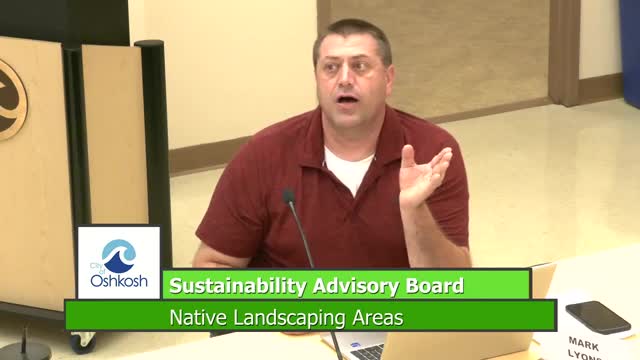Cities explore new landscaping rules to boost biodiversity
September 13, 2024 | Oshkosh City, Winnebago County, Wisconsin
This article was created by AI summarizing key points discussed. AI makes mistakes, so for full details and context, please refer to the video of the full meeting. Please report any errors so we can fix them. Report an error »

In a recent government meeting, officials discussed the complexities surrounding local landscaping ordinances, particularly the regulations governing the use of native plants and the perception of their impact on property aesthetics. The conversation highlighted the need to balance community concerns with environmental goals, as municipalities grapple with how to encourage eco-friendly landscaping while addressing perceived negative impacts.
One focal point was the existing requirement for a five-foot setback for certain landscaping projects. Officials debated whether this regulation should be modified or removed entirely, emphasizing that many zoning laws are often based on community perceptions rather than strict environmental necessity. The consensus was that while it is easier to reduce regulations, reinstating them after removal poses significant challenges.
Participants also raised questions about the clarity of current ordinances, particularly regarding what constitutes acceptable landscaping. Suggestions included providing clearer guidelines and examples of native plantings that could replace traditional turf grass, which many residents seek to eliminate for various reasons, including maintenance and ecological benefits.
The discussion underscored the importance of education and guidance for residents looking to transition to native landscaping. Officials acknowledged the need for resources that outline suitable plant species and alternatives to conventional grass, aiming to alleviate misconceptions about the implications of such changes.
Overall, the meeting reflected a commitment to refining local landscaping policies to better serve both environmental objectives and community interests, with a focus on clarity and education as essential tools for fostering understanding and compliance among residents.
One focal point was the existing requirement for a five-foot setback for certain landscaping projects. Officials debated whether this regulation should be modified or removed entirely, emphasizing that many zoning laws are often based on community perceptions rather than strict environmental necessity. The consensus was that while it is easier to reduce regulations, reinstating them after removal poses significant challenges.
Participants also raised questions about the clarity of current ordinances, particularly regarding what constitutes acceptable landscaping. Suggestions included providing clearer guidelines and examples of native plantings that could replace traditional turf grass, which many residents seek to eliminate for various reasons, including maintenance and ecological benefits.
The discussion underscored the importance of education and guidance for residents looking to transition to native landscaping. Officials acknowledged the need for resources that outline suitable plant species and alternatives to conventional grass, aiming to alleviate misconceptions about the implications of such changes.
Overall, the meeting reflected a commitment to refining local landscaping policies to better serve both environmental objectives and community interests, with a focus on clarity and education as essential tools for fostering understanding and compliance among residents.
View full meeting
This article is based on a recent meeting—watch the full video and explore the complete transcript for deeper insights into the discussion.
View full meeting
